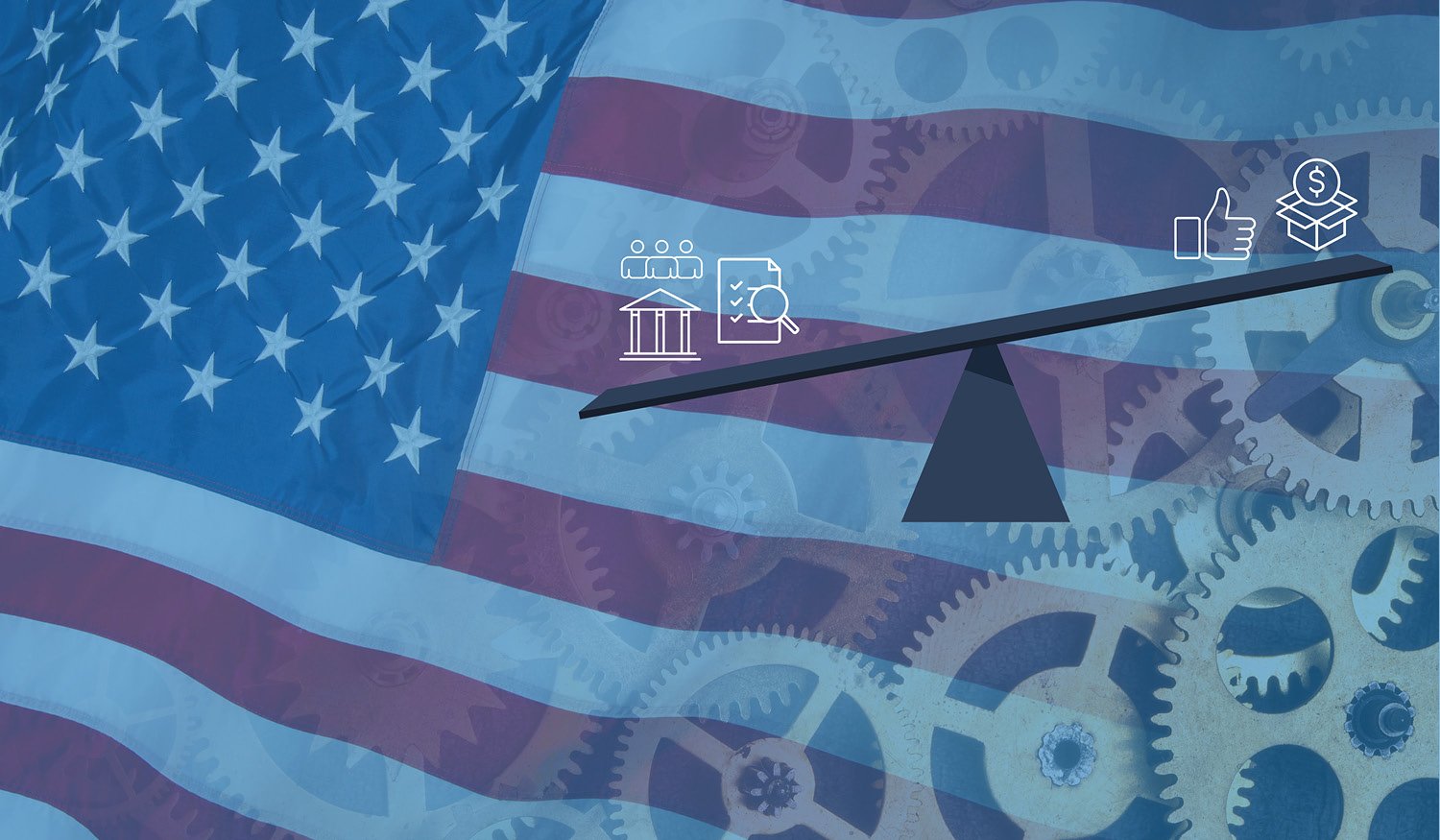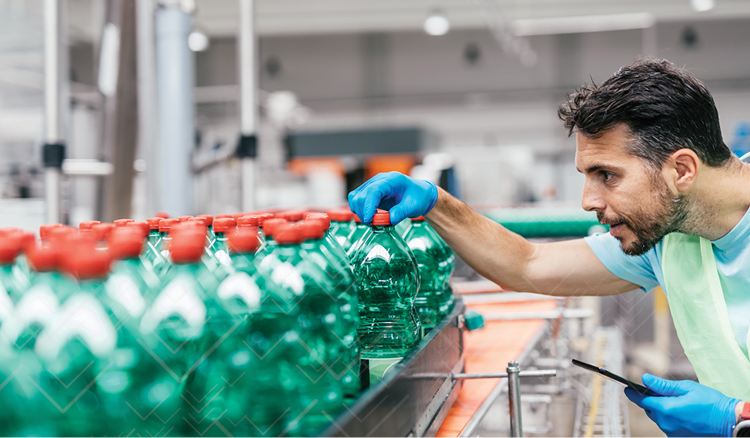Navigating the Maze: Striking a Balance Between Incentives and Regulations in US Manufacturing
The landscape of US manufacturing is undergoing a profound transformation as the nation strategically focuses on reshoring and bolstering domestic production. In recent years, both federal and state governments have taken proactive measures by introducing a variety of incentives to entice manufacturers back to their home turf. However, this promising scenario is often clouded by the intricate web of regulations, which, at times, seem to counteract the very incentives designed to spur growth. This article delves into the spectrum of federal and state incentives, the optimal strategies to access them, and the critical imperative for a balanced regulatory framework.
Federal Incentives
Exploring the landscape of recent federal incentives reveals a dynamic range of initiatives aimed at promoting innovation and sustainability in various sectors. One standout program is the Inflation Reduction Act of 2022, a landmark initiative that marks a significant leap forward. This act offers tax credits and directs grants to businesses engaged in the production of battery components and electric vehicle charging station equipment. What sets it apart is its inclusivity, extending benefits to clean vehicle manufacturers and component producers, irrespective of their federal tax liability. This broad approach aims to stimulate growth and technological advancement in the burgeoning electric vehicle industry.
Another major contributor to the federal incentives scene is the Build Back initiative, fueled by President Biden's American Rescue Plan. This initiative channels substantial funds to 24 states, earmarked for transformative projects designed to breathe new life into local industries. The projects funded under this initiative are diverse, ranging from supporting family-owned manufacturers making the shift to electric vehicles to establishing cutting-edge manufacturing centers focused on testing and training. This multifaceted approach reflects a commitment to comprehensive industry revitalization, aligning with broader goals of sustainability and economic progress.
Adding to the array of federal initiatives is the Buy America Act, which strategically emphasizes a domestic-first approach. This act mandates federal agencies to prioritize the procurement of materials and products within the United States. By doing so, it creates a conducive environment for manufacturers operating on American soil. This emphasis on supporting domestic industries not only bolsters economic resilience but also aligns with broader national interests.
State Incentives
At the state level, incentives are finely tuned to specific industries, including chip manufacturing, clean energy development, solar panel production, electric vehicles, and related components. Accessing these incentives demands collaboration with state and local economic development organizations, offering an array of benefits such as grant funds, property tax abatements, sales tax exemptions, and direct payments for employee training.
Illustratively, in Illinois, local governments can reduce property taxes and contribute a portion of employee income tax withholding to employers. Meanwhile, in Michigan, incentives for light manufacturing encompass property tax abatement, elimination of sales taxes on equipment, and direct grants for facility leasing.
Navigating Regulatory Complexity: A Dilemma for Manufacturers
Regulations play a pivotal role in ensuring workplace safety, environmental responsibility, and product quality. While well-designed regulations create a level playing field and encourage responsible business practices, a convoluted regulatory environment can stifle innovation, burden manufacturers with compliance costs, and erode the competitive edge of domestic industries in the global market.
The National Association of Manufacturers (NAM) Q3 2023 Manufacturers’ Outlook Survey shed some light on what a convoluted regulatory environment could cause -- substantial time and resources to expend on compliance. With over 63% spending more than 2,000 hours annually on adhering to federal regulations, and over 17% dedicating more than 10,000 hours, the compliance burden leaves manufacturers with fewer resources for innovation, expansion, and job creation. Below shows the top challenges manufacturers face, with 56.7% finding the unfavorable business climate a top challenge.

Source: National Association of Manufacturers, NAM Manufacturers' Outlook Survey Third Qtr.
Industry leaders, including Jay Timmons, President and CEO of NAM, and Melissa Hockstad, President and CEO of the American Cleaning Institute, express concerns about the adverse impact of regulatory overload on investment, hiring, and wage growth. This underscores the pressing need for a regulatory environment that balances safety and economic prosperity.
The Path Forward: Collaborative Reform
A balanced regulatory approach hinges on transparency, efficiency, and periodic evaluations of existing regulations. Regular audits can identify outdated, redundant, or ineffective policies, ensuring regulations remain relevant and aligned with the evolving needs of the manufacturing industry. Collaboration with industry stakeholders can lead to the development of effective and feasible rules.
Achieving a balanced regulatory approach involves collaboration between government agencies, industry leaders, and advocacy groups. Prioritizing policies that balance public interest and economic growth is essential. Legislative and administrative reforms that streamline regulatory processes, eliminate redundancies, and reduce the compliance burden on manufacturers are crucial to creating an environment where businesses can thrive, innovate, and contribute to economic prosperity while upholding high standards of safety and sustainability.
Conclusion
In the dynamic landscape of US manufacturing, achieving a delicate equilibrium between incentives and regulations is imperative for sustained growth and competitiveness. A balanced regulatory approach ensures that the manufacturing sector not only meets the highest standards of safety and sustainability but also thrives as a driver of innovation and economic prosperity. The collaborative efforts of government, industry, and advocacy groups are pivotal in shaping a regulatory framework that fosters a resilient and vibrant manufacturing sector for the future. As the nation navigates this maze, the call for a balanced and efficient regulatory environment resonates as a fundamental necessity for the success of US manufacturers in the global market.
Previous Posts
How On Demand Labor Helps Manufacturers Maintain World Class Quality When Demand Refuses to Sit Still
The Future of Manufacturing and Logistics
Create a free business profile today to explore our platform.






